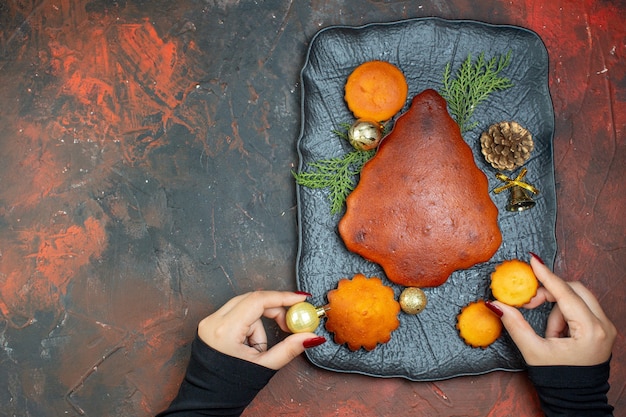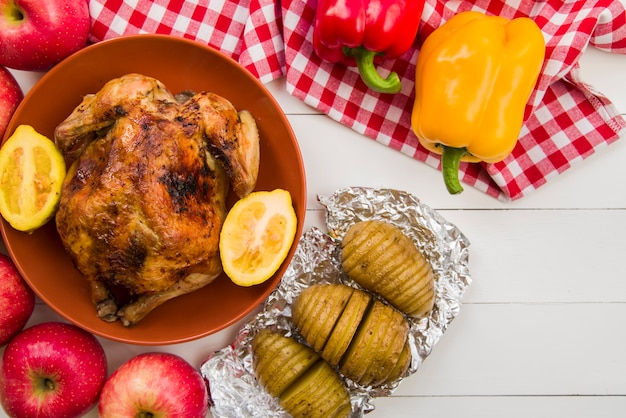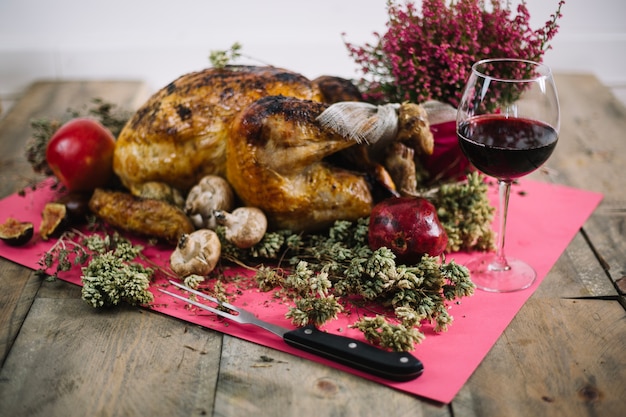Every year, the same question pops up: "How long do I cook this darn turkey?" You've got your festive bird, all plump and beautiful, waiting to be the star of the Christmas table. But how do you actually cook it without ending up with a dry, overcooked monstrosity? It's a question that's haunted my holiday dinners for years, especially when I'm dealing with a big bird like a 10lb turkey.
Let's face it, there's no one-size-fits-all answer. It's not just about sticking the turkey in the oven and hoping for the best. There's a bit of science involved, a whole lot of trial and error, and a dash of culinary intuition. But don't worry, I've been through the trials, and I'm ready to share my knowledge, my secrets, and maybe even a few war stories.
Today, we're diving deep into the world of turkey cooking time, specifically focusing on a 10lb bird. We'll unravel the mystery of turkey cooking, talk about the different methods, the importance of temperature, and of course, how to make sure your turkey is cooked perfectly. So grab your oven mitt, put on your chef's hat, and get ready to conquer the turkey!
(Part 1) The Science of a perfect turkey

Let's get the scientific stuff out of the way first. cooking a turkey is all about ensuring that the internal temperature reaches a safe level to kill any lurking bacteria. That magic number is 165°F (74°C). It's the point where those little critters can't survive. But reaching that temperature depends on a few factors, each playing a crucial role in the turkey's journey from raw to roasted.
1. The Turkey's Size: A Heavyweight Challenge
Think of it this way: the bigger the turkey, the longer it takes to cook. A 10lb turkey is a heavyweight champion, and it needs a good chunk of time in the oven to get thoroughly cooked. It's all about mass. More mass means more time to heat up. That's why a trusty thermometer is your best friend. It's your way of knowing for sure that the internal temperature is where it should be, so you don't end up with a half-cooked bird. Nobody wants a half-cooked bird!
2. Your Oven's Personality: A Hot-Headed Friend or a Slowpoke?
Ovens are like people. They have their own personalities, and some are better at holding heat than others. A gas oven might cook a bit differently from an electric one, and a fan-assisted oven can be a turbocharged cooking machine. And then there's the actual oven temperature. Higher temperatures mean faster cooking, but also a higher risk of burning the outside before the inside is cooked through. It's a delicate balance, and you've got to be mindful of your oven's quirks.
3. The Stuffing Factor: A Delicious Insulator
Stuffing is a whole other story. Do you stuff your turkey? This can make a big difference. Stuffing inside the turkey can make it take longer to cook, as the stuffing itself needs time to heat up. Plus, it can lead to uneven cooking, as the stuffing acts like an insulator, trapping heat inside. So, if you're going to stuff the bird, you'll need to add extra cooking time. It's a delicious dilemma, but one you'll need to factor in.
(Part 2) The Turkey Time Table: Estimating the Time

Ok, let’s get down to the nitty-gritty. How long does it actually take to cook a 10lb turkey? Well, as I said, it depends. Here's a general guideline, but always check the internal temperature to make sure it's cooked through.
A Rough Guide: The Starting Point
For a 10lb turkey, you're looking at around 3-4 hours in the oven at 325°F (165°C). But remember, that's just a starting point. You need to adjust this time based on a few factors:
- Your oven type: If your oven is a bit on the slow side, you'll need to add a bit more time. A fan-assisted oven will cook faster, so you might be able to reduce the time a bit. It's all about knowing your oven's temperament.
- Whether you stuff it: As I mentioned, stuffing adds extra time. Add about 30 minutes to your cooking time if you're stuffing the turkey. Remember, stuffing is a delicious insulator!
- The shape of the bird: A wider, flatter turkey will cook faster than a long, skinny one. It's all about surface area and how heat interacts with the bird.
- Don't carve it right away: Let the turkey rest for at least 30 minutes to allow the juices to redistribute. It's a chance for the turkey to recover a bit.
- Use the dark meat: The dark meat is less likely to be dry than the white meat, so you can still use it for dishes like sandwiches or salads. It's a way to salvage a bit of the bird's deliciousness.
- Don't throw it away: You can still use the overcooked turkey for dishes like turkey soup or turkey salad. It's a reminder that even with a slight miscalculation, you can still create delicious meals.
A Helping Hand: The Turkey Time Table
Here's a handy table to help you estimate the cooking time based on the turkey's weight:
| turkey weight (lbs) | Cooking Time (hours) |
|---|---|
| 10-12 | 3-4 |
| 12-14 | 4-5 |
| 14-16 | 5-6 |
| 16-18 | 6-7 |
(Part 3) The Secret to a Perfectly Cooked Turkey

So, you've got your turkey in the oven, but how do you know it's actually cooked? There are a few tricks up my sleeve to make sure your turkey is cooked to perfection.
1. Your Turkey's Best Friend: The meat thermometer
The most important tool in your arsenal is a meat thermometer. This is the only way to be certain your turkey is safe to eat. The thermometer should be inserted into the thickest part of the thigh, without touching the bone. It's not cooked through until it reaches 165°F (74°C) in the thickest part of the thigh. It's a crucial step, a temperature checkpoint that ensures a safe and delicious turkey.
2. The Leg Joint Trick: An Old School Test
There's a bit of an old-school trick, where you check if the leg joints move easily. If they do, it's likely cooked, but this isn't always reliable. It's always best to double-check with the thermometer. It's like an extra safety net to make sure you're on the right track.
3. Resting Your Turkey: A Time for Relaxation
Once the turkey is cooked, it's vital to let it rest for at least 30 minutes before carving. This allows the juices to redistribute throughout the meat, resulting in a more moist and succulent bird. It's a chance for the turkey to relax and settle, resulting in a better eating experience.
(Part 4) Temperature: The Key to Turkey Success
We've already mentioned the importance of temperature for cooking a turkey, but it's worth going into more detail. The temperature needs to be high enough to kill harmful bacteria, but not so high that you end up with a dry, overcooked bird.
1. The Oven Temperature: Finding the Sweet Spot
The recommended oven temperature for a turkey is 325°F (165°C). This is a good compromise between cooking time and ensuring the bird is cooked through without burning. If you're going for a lower temperature, you'll need to add extra time to make sure the turkey is fully cooked. If you're cooking at a higher temperature, be careful not to overcook the turkey, and watch it closely to prevent burning.
2. The Internal Temperature: The Magic Number
As mentioned before, the turkey is cooked through when the internal temperature reaches 165°F (74°C) in the thickest part of the thigh. This temperature ensures that any harmful bacteria are destroyed. Don't be tempted to undercook the turkey, as this could lead to food poisoning. It's better to be safe than sorry!
(Part 5) Beyond the Oven: Other Ways to Cook Your Turkey
Who says you have to roast your turkey in the oven? There are other options!
1. Deep Frying: A Crispy and Juicy Treat
This is a popular method for achieving a crispy skin and juicy meat. It involves submerging the turkey in a large vat of hot oil. However, it's a bit more risky than oven cooking and requires a special fryer. Make sure you follow the safety instructions carefully, as hot oil can be dangerous. It's a method for the adventurous cook, but with the right equipment and precautions, it can be a delicious success!
2. Smoking Your Turkey: A Flavorful Adventure
If you're feeling adventurous, you can try smoking your turkey. This method adds a smoky flavour to the meat, and you can use different types of wood chips to create different flavour profiles. It takes a little more time and skill than oven cooking, but it's well worth it if you're looking for a unique flavour. It's a culinary journey for those who love a bit of smoke and spice!
(Part 6) Turkey cooking tips and Tricks: Making Your Bird Shine
Now, for some tried-and-true turkey cooking tips and tricks. These little hacks can make a big difference in the flavour and texture of your bird.
1. The Brining Magic: A Secret Weapon for Moisture
Brining involves soaking the turkey in a salt water solution for several hours. This helps to keep the turkey moist and succulent, and it adds flavour. It's especially helpful for larger birds, as they can tend to dry out during cooking. Think of it as a hydrating spa treatment for your turkey, leaving it plump and juicy!
2. The Butter Rub: A Golden Touch of Flavor
Before you roast your turkey, rub it with butter and herbs. This will add flavour and moisture to the skin, resulting in a beautiful, golden-brown finish. It's a simple but essential step, adding a touch of elegance and flavour.
3. Stuffing the Cavity: A Delicious Inside Story
If you're stuffing your turkey, make sure you don't pack it too tightly. You want to leave some room for the stuffing to cook evenly. It's also a good idea to cook the stuffing separately to ensure it's cooked through. It's a delicious choice, but it requires careful attention and planning.
(Part 7) The Big Bird Challenge: Dealing with a Turkey That's Too Big
Now, let's talk about the elephant in the room: what if your turkey is too big for your oven? This is a common problem, especially with larger families.
1. Two Ovens, Double the Fun: A Feast of Abundance
If you're lucky enough to have two ovens, you can roast your turkey in parts. Cook the breast and legs separately, making sure both parts reach the required internal temperature. It's a clever solution for those with a double dose of oven power.
2. Cooking in Stages: A Step-by-Step Approach
You can also cook the turkey in two stages. Cook the legs for a longer time, then remove them from the oven and cook the breast for a shorter time, so that it doesn't overcook. It's a strategic approach, ensuring that both parts are perfectly cooked.
3. Spatchcocking: Flattening the Bird for Even Cooking
Another option is to spatchcock your turkey, which involves removing the backbone and flattening the bird. This helps the turkey cook faster and more evenly. It's a technique that's gaining popularity, as it creates a delicious and efficient cooking experience.
(Part 8) The Overcooked Turkey: Dealing with a Culinary Crisis
We've all been there. You're excited about your turkey, and you've been watching it like a hawk, but you just can't resist checking the internal temperature a little too often. And then it happens - you've overcooked the bird.
Don't panic! Overcooked turkey is still edible, but it won't be as juicy and delicious as a perfectly cooked one. The meat will be drier and tougher.
Tips for Overcooked Turkey: Saving a Dry Bird
Here are a few tips for dealing with an overcooked turkey:
FAQs
What temperature should the turkey be cooked at?
The recommended oven temperature for cooking a turkey is 325°F (165°C). This is a good compromise between cooking time and ensuring the bird is cooked through without burning.
How long should a 10 lb turkey cook?
A 10 lb turkey will typically take around 3-4 hours to cook in a 325°F (165°C) oven. However, it's important to check the internal temperature to ensure the turkey is cooked through.
What's the best way to tell if the turkey is cooked?
The best way to tell if the turkey is cooked is to use a meat thermometer. The internal temperature should reach 165°F (74°C) in the thickest part of the thigh.
How long should I rest the turkey after it's cooked?
It's important to let the turkey rest for at least 30 minutes after it's cooked. This allows the juices to redistribute, resulting in a more moist and succulent bird.
What should I do if I overcook my turkey?
Overcooked turkey is still edible, but it will be drier and tougher than a perfectly cooked bird. You can still use it for dishes like turkey soup or turkey salad.
Everyone is watching

How to Cook Frozen Lobster Tails Perfectly: A Step-by-Step Guide
RecipesLobster. Just the word conjures up images of lavish meals, special occasions, and a taste of luxury. But let's...

Pigs in a Blanket Cooking Time: How Long to Bake for Perfect Results
RecipesAh, pigs in a blanket. Just the name conjures up images of those delightful little parcels of crispy pastry en...

Pork Fillet Cooking Time: How Long to Cook It Perfectly
RecipesPork fillet, or tenderloin as it's sometimes called, is a real favourite in our house. It's so versatile, and...

The Ultimate Guide to Tender, Juicy Pulled Pork
RecipesRight, let's talk pulled pork. It's one of those dishes that just screams "comfort food," doesn't it? I mean...

The Ultimate Guide to Cooking Sweet Potatoes: From Roasting to Mashing
RecipesSweet potatoes. Just the name conjures up images of warm, comforting dishes, bursts of vibrant color, and a to...
